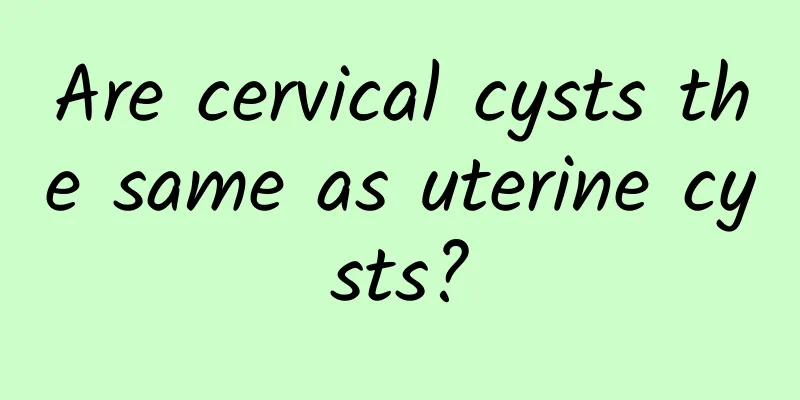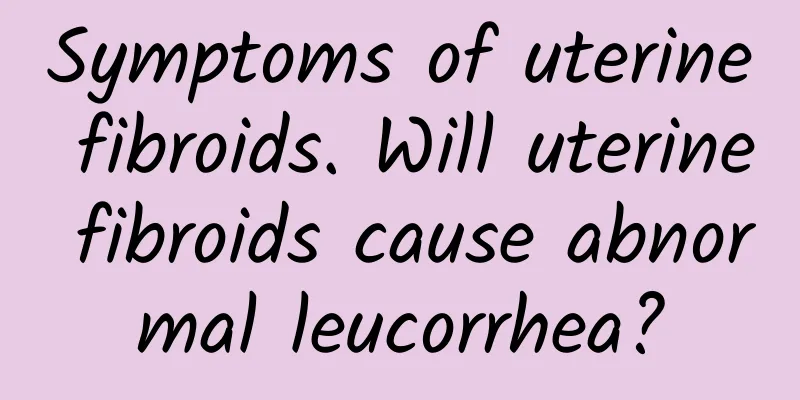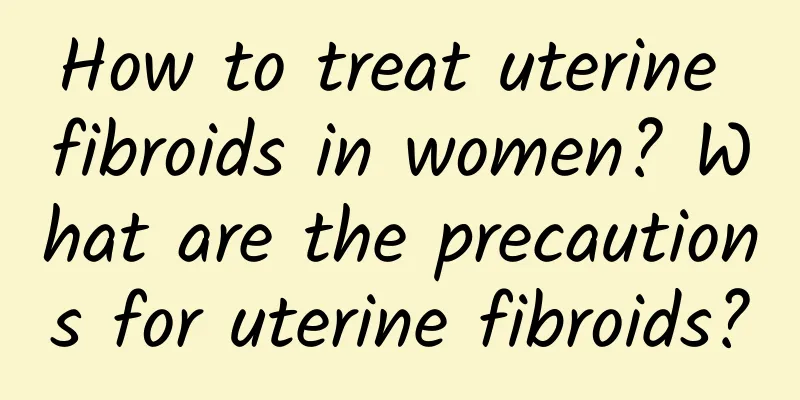Are cervical cysts the same as uterine cysts?

|
Cervical cysts and uterine cysts are not exactly the same. They are two different common gynecological diseases with different lesion locations, causes and symptoms. It is very important to distinguish them and treat them symptomatically. If you find related symptoms, it is recommended to seek medical attention in time to clarify the condition and avoid delaying treatment. 1. Cervical cysts: causes and treatment Cervical cysts are small cystic lesions formed by blockage of cervical gland secretions. They are common in patients with chronic cervicitis and are a relatively common pathological type. -Cause: Chronic inflammation often causes glandular hyperplasia, and the secretions cannot be discharged smoothly. They accumulate and form cysts. This is usually related to repeated infections, changes in hormone levels or anatomical structure. -Treatment: If there are no obvious symptoms or the infection is small, regular observation can be chosen; for patients with large infection or repeated infection, the following treatment methods are usually adopted: 1. Physical therapy: such as freezing or laser, to remove diseased glandular tissue. 2. Drug treatment: Antibiotics can be used to control infection and, if necessary, combined with local medications to improve inflammation. 3. Surgical treatment: If the cyst is large and the symptoms are obvious, it can be removed surgically to prevent further development. 2. Uterine cysts: causes and treatment Uterine cysts usually refer to cystic lesions that occur in the uterine wall or inside the uterus. They may be caused by a variety of causes, so further diagnosis is often required. -Causes: The most common ones include adenomyosis, functional cysts or cystic changes of uterine fibroids, which may be related to endocrine disorders, endometriosis and other factors. - Treatment: Different treatment methods are selected according to the cause and characteristics of the cyst: 1. Drug treatment: Suitable for functional cysts or mild endocrine disorders, hormone drugs are often used to regulate hormone levels. 2. Minimally invasive surgery: If the cyst is large in diameter or continues to grow, laparoscopic cyst removal can be an option. 3. Auxiliary treatment: Take Chinese patent medicine to regulate qi and blood circulation, and cooperate with daily observation to alleviate the progression of the disease. 3. How to distinguish between cervical cysts and uterine cysts Cervical cysts are mostly located on the surface of the cervix, occasionally accompanied by mild symptoms such as increased secretions and abnormal vaginal discharge, while uterine cysts are often found inside the uterus, and patients may experience abnormal menstruation, abdominal distension, or even infertility. Ultrasound, magnetic resonance imaging (MRI) and other imaging tests can identify the location and nature of the cyst, allowing for targeted treatment options. As mentioned above, although both cervical cysts and uterine cysts are cystic lesions, their locations, causes and treatments are significantly different. Women who find lesions should not ignore the condition and should go to a regular medical institution for a clear diagnosis and receive appropriate treatment to control the progression of the disease and protect their physical and mental health. |
<<: What are the symptoms of uterine fibroids?
>>: Is there a high chance of spontaneous abortion in cervical pregnancy?
Recommend
Experts explain important precautions after abortion
Although abortion is no longer considered a major...
Women need to know the symptoms of cervical erosion
Among gynecological diseases, cervical erosion is...
Will vulvar itching get worse after pregnancy?
Will vulvar itching get worse after pregnancy? 1....
One piece of black and white blood-replenishing glutinous rice balls has only 50 calories
The winter solstice, the time for eating glutinou...
How much does cervical cancer surgery cost? Is this surgery cost reasonable?
How much does it cost to do a hysterectomy for ce...
Which hospital should I go to for diagnosis of cervical precancerous lesions?
Nowadays, we are all familiar with cervical preca...
What are the main nursing measures after painless abortion?
What are the main nursing measures after painless...
Can Traditional Chinese Medicine Treat Mild Uterine Prolapse?
Can Traditional Chinese Medicine treat mild uteri...
Is cervical erosion hereditary?
Can cervical erosion be inherited? Cervical erosi...
Is ovarian cyst malignant? What are the symptoms?
Is ovarian cyst malignant? What disease is it? Ov...
What are the dangers of menopause?
Modern society has caused health problems for wom...
How to treat ovarian chocolate cyst?
How to treat ovarian chocolate cyst? Ovarian choc...
The diet for amenorrhea after miscarriage should not be underestimated
After the curettage, especially after abortion (s...
Causes of ectopic pregnancy
Many people are quite different when they suffer ...
Routine diagnostic sequence for hyperprolactinemia
The following are some of the diagnoses that shou...









